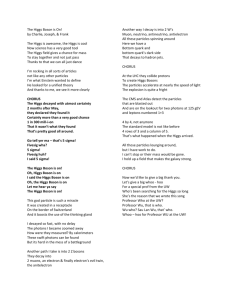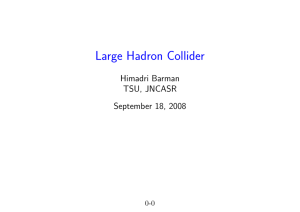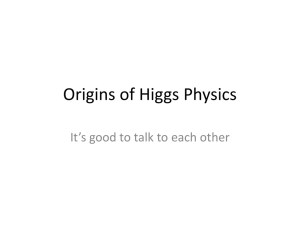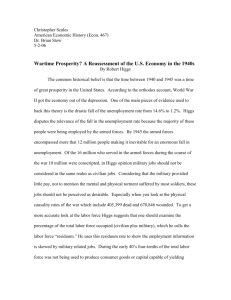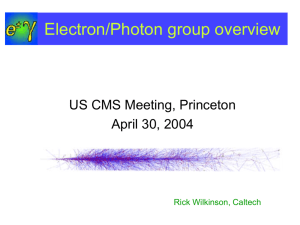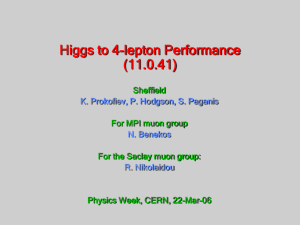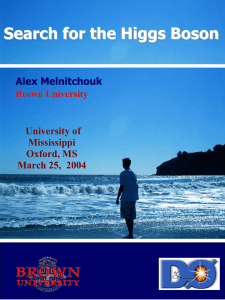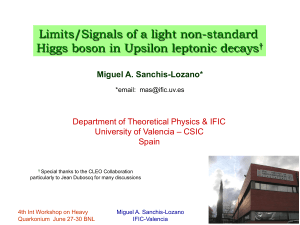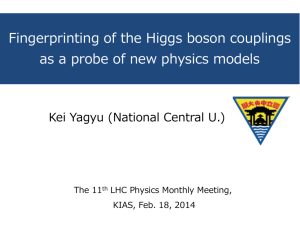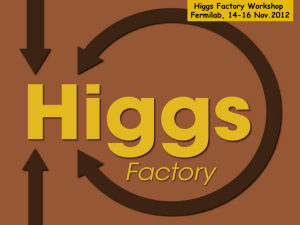Link to LHC presentation - Physics
advertisement
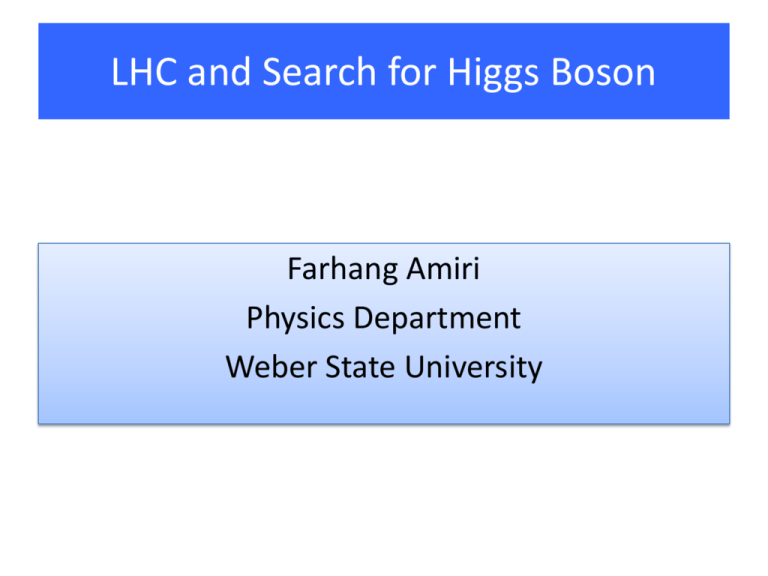
LHC and Search for Higgs Boson Farhang Amiri Physics Department Weber State University Atoms This arises because atoms have substructure Inside Atoms: neutrons, protons, electrons Carbon (C ) Atomic number Z=6 (number of protons) Mass number A=12 (number of protons + neutrons) # electrons = # protons (count them!) (atom is electrically neutral) Gold (Au) Atomic number Z = 79 Mass number A = 197 #electrons = # protons (trust me!) Further layers of substructure: u quark: = 2/3 electric charge d quark: electric charge = -1/3 Proton = uud charge = 1 electric Neutron = udd electric charge = 0 Fundamental Particles Force Strengt h Strong nuclear 1 Electromagnetic .001 Weak nuclear .00001 Gravity 10-38 Carrier Physical effect Gluons Photon Z0,W+,WGraviton? Binds nuclei Light, electricity Radioactivity Gravitation The Intensity Frontier MINOS MiniBooNE SciBooNE 17 kW at 8 GeV for neutrinos Tevatron Collider 250 kW at 120 GeV for neutrinos 10 Young-Kee Kim: Ten Year Plan (Science and Resources), PAC Meeting 2009-03-05 Accelerators – powerful tools for particle physics We make high energy particle interactions by colliding two beams heads on CDF Experiment 2 km DZero Experiment Energy, Mass, and Speed Why Higgs Boson? • Standard Model Force Strengt h Strong nuclear 1 Electromagnetic .001 Weak nuclear .00001 Gravity 10-38 Carrier Physical effect Gluons Photon Z0,W+,WGraviton? Binds nuclei Light, electricity Radioactivity Gravitation • QCD (Quantum Chromodynamics) • QED (Quantum Electrodynamics) Forces • Strong, weak, electromagnetic, gravity • Force carriers: gluon, W/Z bosons, photon • Gluon and photon are massless • W/Z are very heavy…..WHY????? This is the question of symmetry breaking Why is Mass a Problem? Gauge Invariance is the guiding principle • Gauge Invariance leads to QED – Predicts massless photons • Gauge Invariance leads to QCD – Predicts massless gluons • Applying the same principle to weak interactions, predicts massless force carriers (i.e. W/Z) The Solution: The Higgs Field • Screening Current – Photons behave as if they have mass – This idea could be responsible for the mass of force-field quanta The relationship between screening current and mass, and in the context of quantum field theory was developed by Peter Higgs (1964). Higgs Field • We hypothesize that there is a background density of some field with which W and Z quanta interact (but not the massless photon). • The interaction of W+, W-, and Z with Higgs field leads to the screening effect and generates the effective masses of these particles. Higgs Boson • In order to give a nonzero value to the background field, we need a Higgs potential. • Deviations from the uniform field values at different points in space-time, indicates the presence of quantum of this field, that is, the Higgs Boson. Producing Higgs Bosons Producing Higgs Bosons Gluon-gluon fusion How to Discover Higgs • This is a tricky business! – Lots of complicated statistical tools needed at some level • But in a nutshell: – Need to show that we have a signal that is inconsistent with being background – Need number of observed data events to be inconsistent with background fluctuation Higgs Boson Decay If a Higgs particle is produced in a proton-proton collision, an LHC detector might infer what you see here. The four straight red lines indicate very high-energy particles (muons) that are the remnants of the disintegrating Higgs. Status of Higgs Before LHC ATLAS Results Higgs Searches in ATLAS •The Higgs boson can decay into a variety of different particles •ATLAS currently covers nine different decay modes. •The latest data: 85% of all mass regions below 466 GeV are excluded at the 95% CL. •Higgs discovery is most likely: 115-146 GeV, 232256 GeV, 282-296 GeV plus any mass above 466 GeV.

